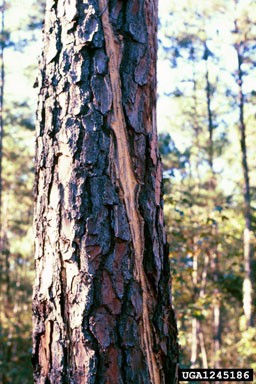Lightning
Lightning is an atmospheric discharge of electricity that can exceed 54,000 oF (many times hotter than the surface of the sun). Lightning tends to be “attracted” to objects on the ground with a slight positive charge that are nearest to the negatively charged storm clouds above. This makes trees an ideal target for lightning strikes. The type of damage a lightning strike will cause is difficult to predict. In some cases, the damage may be obvious such as the classic vertical stripping of bark (that may be continuous or discontinuous) that may spread straight down the stem or may spiral around the circumference of the tree. In other cases the damage may be more extensive and the tree will appear as if it exploded from the inside. Many lightning strikes go undiagnosed however because they do not cause obvious physical signs. Instead, the tree’s vascular system may become super-heated and permanently damaged by the strike. Vascular system damage may be widespread (even extending into the roots) or may occur in relatively localized areas of the tree and can mimic drought or disease symptoms.
